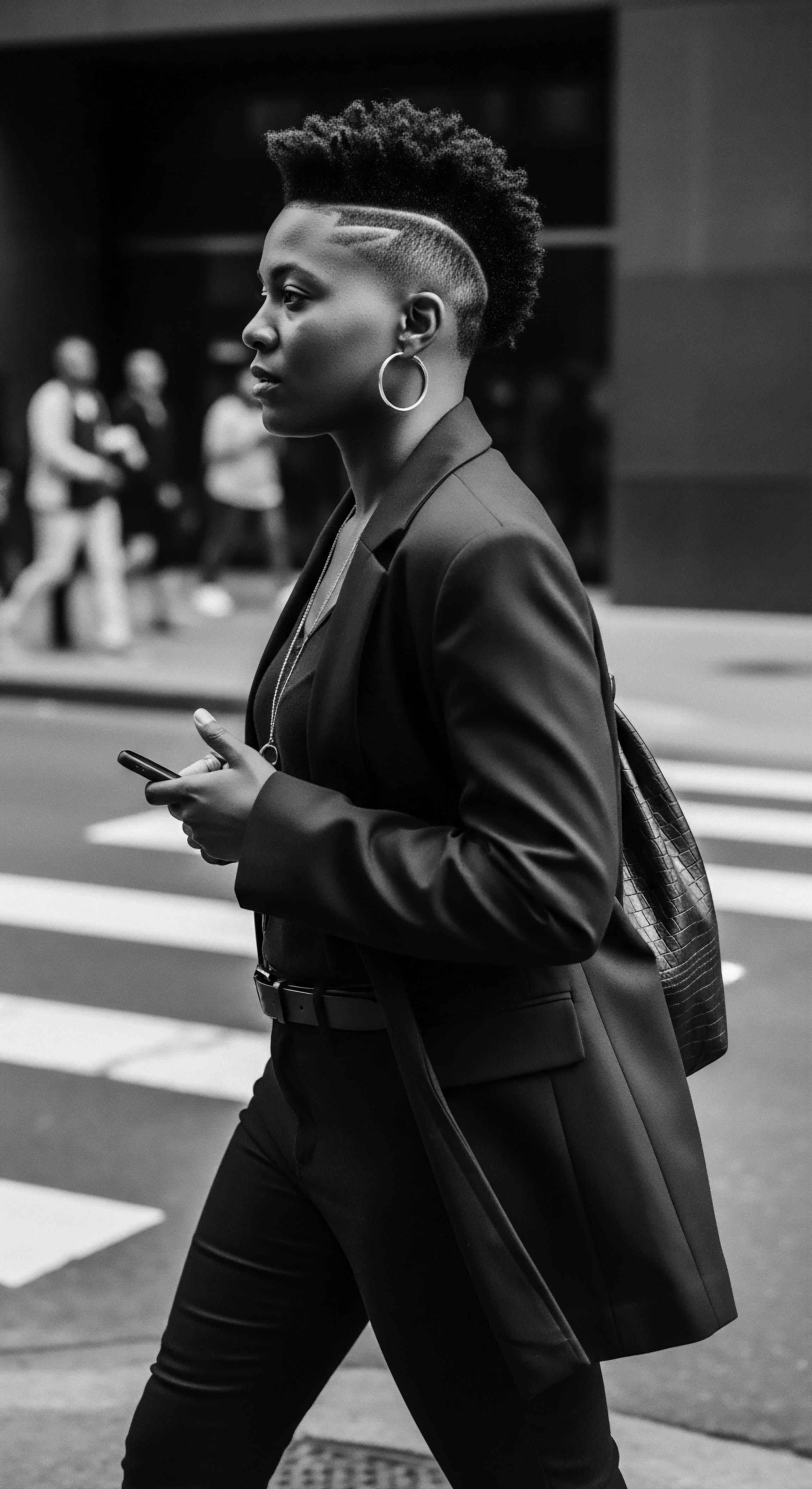
Fundamentals
The notion of Nocturnal Hair Protection, within Roothea’s ‘living library,’ points to the deliberate actions taken to safeguard hair during the hours of slumber. At its simplest, this concept clarifies the practice of preserving hair’s integrity, moisture, and style overnight. For those unfamiliar with the intricate world of textured hair, this might seem like a minor detail, yet its historical and ongoing significance for Black and mixed-race communities cannot be overstated. It is a fundamental element of care, a quiet ritual that shields delicate strands from the potential harm of friction, dryness, and tangling that can occur against common bedding materials.
Understanding Nocturnal Hair Protection begins with recognizing the inherent characteristics of textured hair. Unlike straighter hair types, the unique coil and curl patterns of Black and mixed-race hair mean that natural oils, known as sebum, do not travel as easily down the hair shaft. This structural reality often leads to increased dryness, making these hair types more susceptible to breakage, split ends, and general wear. The nightly act of protecting hair is a response to this biological reality, a way to maintain the moisture balance that is so crucial for healthy, resilient hair.
Historically, the rudimentary explanation of Nocturnal Hair Protection centered on practical necessity. Imagine ancestral communities, without the aid of modern conditioning agents, seeking ways to preserve their hair’s vitality. Covering the hair, whether with simple cloths, carefully arranged braids, or other ingenious methods, offered a tangible shield against environmental elements and the abrasive surfaces encountered during rest. This elementary delineation of the practice highlights its foundational role in daily existence, not merely as a beauty routine but as a practice of sustenance for hair that is both sacred and vulnerable.
The meaning of Nocturnal Hair Protection is rooted in safeguarding hair from the mechanical stress and moisture loss that occur during sleep.
Common household linens, particularly cotton pillowcases, possess a fibrous texture that can create friction against hair strands. This constant rubbing, as one shifts during sleep, can disrupt the hair’s outermost layer, the cuticle. When the cuticle is lifted or damaged, it allows precious moisture to escape, leading to dryness, frizz, and ultimately, breakage.
For textured hair, where the cuticle naturally tends to be more raised and the strands are more prone to tangling due to their helical structure, this nightly friction poses a considerable threat to overall hair health. The initial understanding of Nocturnal Hair Protection is therefore about creating a smoother, less absorbent barrier between the hair and the sleeping surface.
This protection is not merely about preserving a style; it is about honoring the very life of the strand, ensuring its strength and vitality endure through the night.
From the earliest forms of protective head coverings to the modern satin bonnets and silk pillowcases, the core principle remains consistent ❉ to minimize friction and retain moisture. These simple yet profoundly effective tools serve as a testament to generations of lived experience and intuitive understanding of hair’s needs. The practice represents a continuous dialogue between human ingenuity and the elemental biology of hair, ensuring that the legacy of strong, vibrant textured hair continues to flourish.
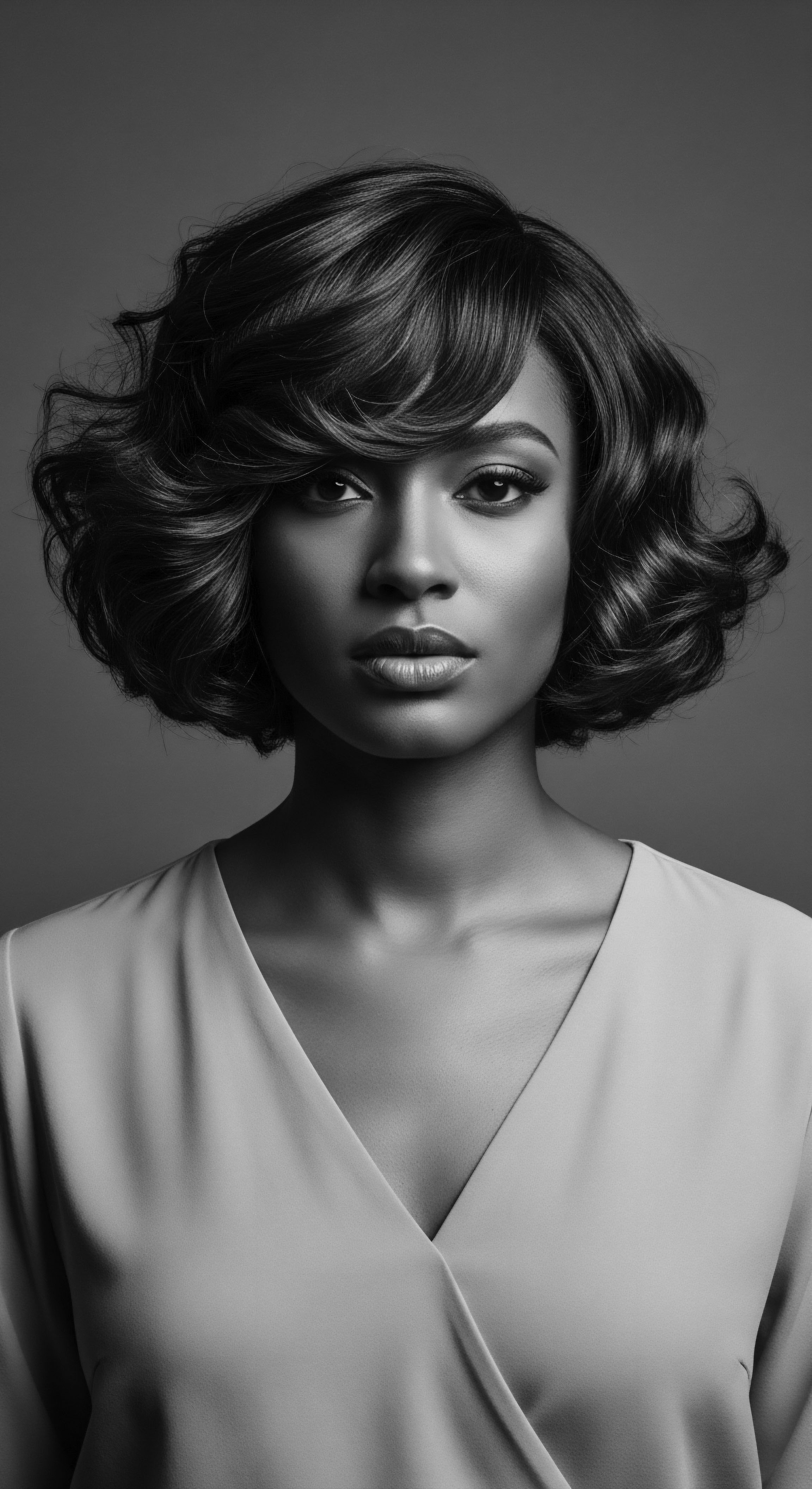
Intermediate
Moving beyond the basic clarification, the intermediate meaning of Nocturnal Hair Protection delves into its layered significance, particularly within the continuum of textured hair care traditions. This is where the concept begins to reveal its deep connections to ancestral wisdom and the nuanced ways communities have adapted to preserve their crowns. It’s an interpretation that considers both the visible practices and the underlying rationale, often a blend of practical necessity and cultural reverence.

The Mechanics of Nightly Preservation
At an intermediate level, the explanation of Nocturnal Hair Protection addresses the specific challenges textured hair faces during sleep. The inherent coil and curl patterns, while beautiful, make strands more susceptible to tangling and knotting. When hair rubs against coarse fabrics like cotton, these delicate patterns can snag, leading to mechanical damage.
This mechanical stress can compromise the hair’s structural integrity, leading to breakage and split ends. The deliberate act of wrapping hair or sleeping on smooth surfaces mitigates this abrasive interaction, allowing the hair to glide rather than catch.
Moreover, the issue of moisture retention is central. Textured hair, by its very nature, tends to be drier than other hair types because the natural oils from the scalp struggle to traverse the twists and turns of the strand. Cotton, a highly absorbent material, can draw moisture directly from the hair, leaving it parched and brittle by morning.
This dehydration weakens the hair, making it even more vulnerable to friction-induced damage. Nocturnal Hair Protection, therefore, functions as a moisture barrier, allowing oils, conditioners, and the hair’s natural hydration to remain within the strand, rather than being wicked away.
Nocturnal Hair Protection is a testament to the enduring wisdom of communities who understood the subtle interplay between hair’s physical vulnerability and the environmental elements of rest.
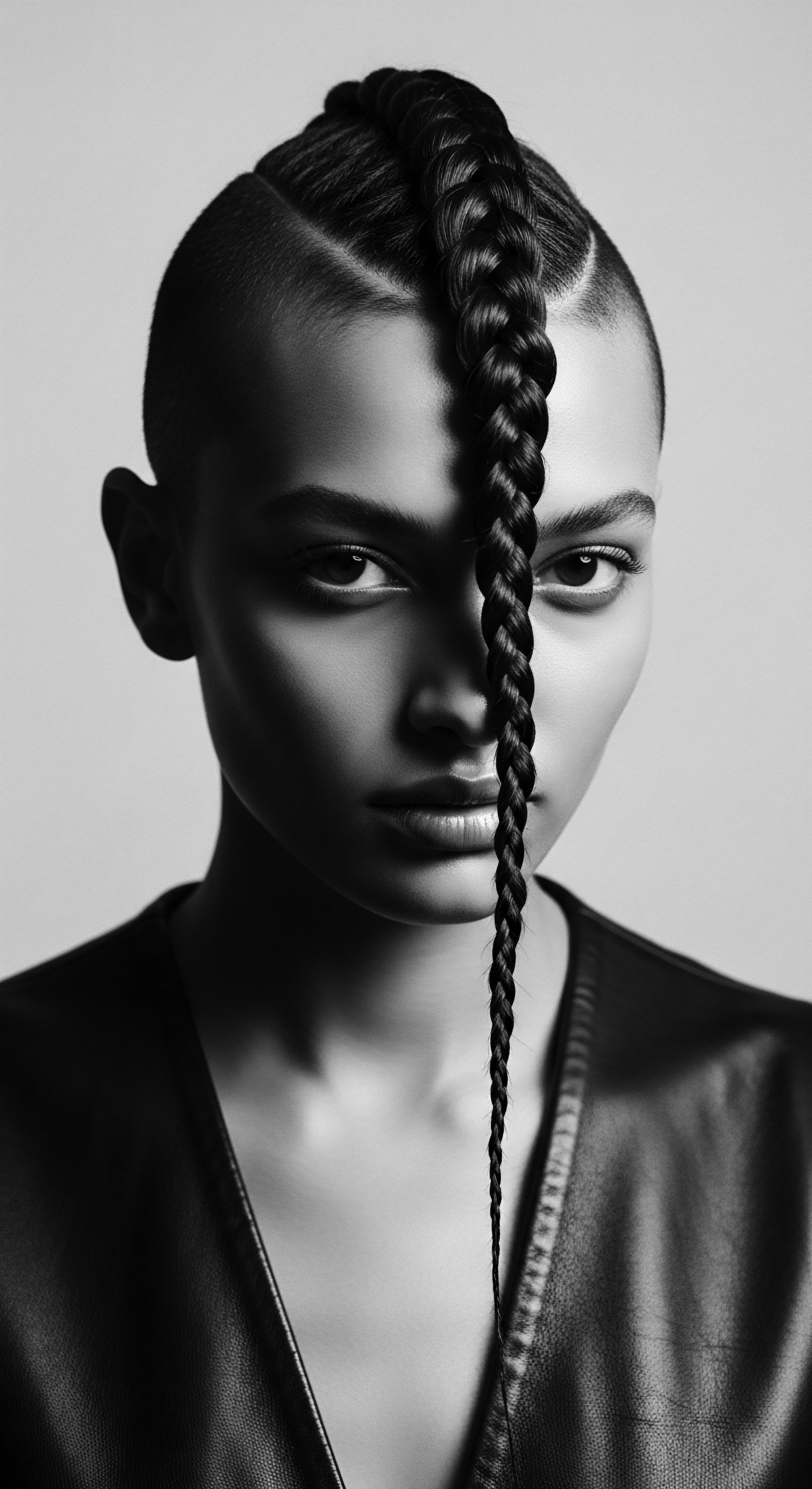
Echoes from the Source ❉ Ancestral Care Rituals
The historical roots of Nocturnal Hair Protection are as ancient as the communities who practiced them. In various African cultures, head coverings, often called ‘dukus’ in Ghana or ‘doek’ in Namibia and South Africa, served multiple purposes, including protection during sleep. These coverings were not mere utilitarian items; their styling often conveyed information about wealth, marital status, and ethnic identity. The foresight to shield hair overnight, therefore, was not just a practical measure but a component of a holistic approach to hair that recognized its social and spiritual weight.
In some West African traditions, specific plant oils were used as part of nightly hair rituals. For example, shea butter, derived from the nuts of the shea tree, was (and still is) applied to hair to provide a rich, emollient layer. This practice not only nourished the hair but also created a protective coating that would reduce friction against sleeping surfaces and seal in moisture. The application of such oils, followed by wrapping or braiding, formed a comprehensive system of nocturnal care, passed down through generations.
Consider the practices documented in the African diaspora, where the continuity of hair protection became a subtle yet powerful act of cultural preservation. During enslavement, headwraps were paradoxically weaponized to denote subjugation, yet Black women reclaimed them as symbols of resistance and self-expression, often using them to protect their hair from harsh conditions and maintain dignity. This dual existence, as both an imposed marker and a tool of defiance, speaks volumes about the deep-seated significance of these protective measures.
- Headwraps ❉ From ‘geles’ in Nigeria to ‘dukus’ in Ghana, these coverings served as both cultural markers and practical nightly shields against friction and dirt.
- Braiding and Twisting ❉ Ancestral practices of braiding or twisting hair before sleep minimized tangling and maintained moisture, a tradition that continues to be a cornerstone of modern protective styling.
- Natural Oils and Butters ❉ Application of plant-based emollients, like shea butter or coconut oil, provided a nourishing barrier against dryness and environmental exposure during rest.
The evolution of the durag, for instance, offers a poignant case study. Originating in the 19th century among African American laborers and enslaved people to protect hair from sweat and dirt, it later transformed into a symbol of cultural identity and a tool for maintaining hairstyles, particularly waves and locs. Its use at night to keep hair patterns intact and prevent breakage highlights a continuous thread of ingenious adaptation for nocturnal hair preservation.
The wisdom embedded in these ancestral methods reveals a sophisticated understanding of hair’s needs, long before modern science articulated the specifics of cuticle damage or moisture loss.
| Historical Context/Region Sub-Saharan Africa (Pre-colonial) |
| Traditional Method Elaborate headwraps (Dukus, Geles, Doeks) |
| Primary Benefit for Hair Protection from dust, sun, and friction; preservation of intricate styles. |
| Historical Context/Region Ancient Egypt |
| Traditional Method Wigs and head coverings, use of oils |
| Primary Benefit for Hair Hygiene, protection from elements, and preservation of groomed appearances, sometimes with magical or ritualistic associations. |
| Historical Context/Region African Diaspora (Slavery Era onwards) |
| Traditional Method Simple cloth wraps, early bonnets, braiding |
| Primary Benefit for Hair Mitigation of damage from harsh conditions, moisture retention, and quiet acts of self-preservation. |
| Historical Context/Region Early 20th Century (USA) |
| Traditional Method Satin-lined headwraps, durags |
| Primary Benefit for Hair Protection of chemically treated hair (e.g. Marcel waves, conks) and natural textures, reduction of frizz and breakage. |
| Historical Context/Region These practices underscore a continuous legacy of care, adapting materials and techniques to meet the unique needs of textured hair through changing eras. |
The significance of these methods goes beyond the physical. They are cultural touchstones, reflecting resilience, ingenuity, and a profound connection to self and lineage. The act of Nocturnal Hair Protection, in this light, is not merely a regimen; it is a continuation of an ancestral conversation about beauty, identity, and wellbeing.
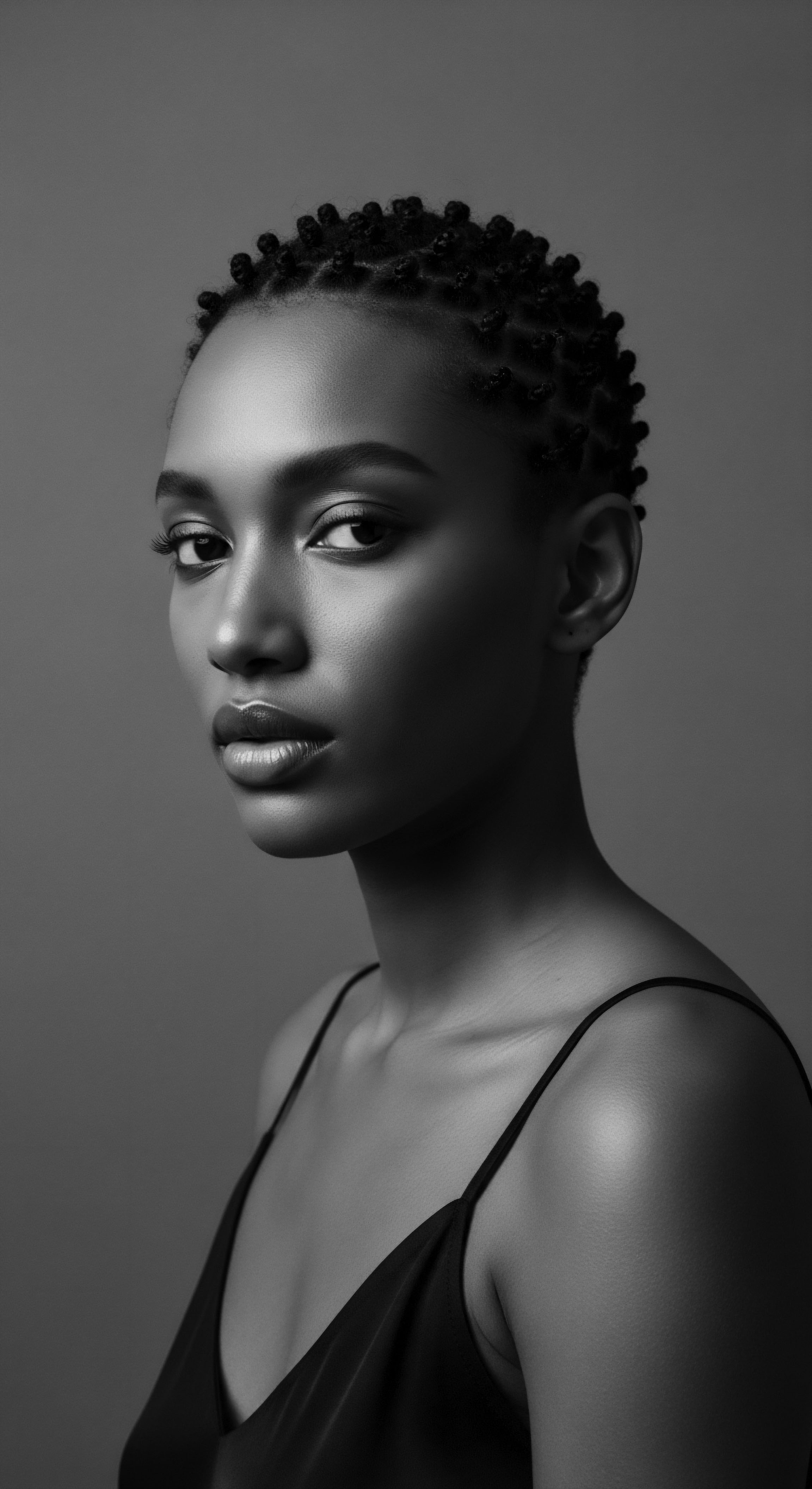
Academic
The academic elucidation of Nocturnal Hair Protection transcends simple definitions, entering a realm of critical analysis grounded in trichology, material science, and cultural anthropology. This comprehensive examination positions Nocturnal Hair Protection as a sophisticated biomechanical and cultural strategy, specifically calibrated to address the unique vulnerabilities of textured hair. Its meaning is thus a complex interplay of biophysical principles, historical adaptation, and sociopolitical resonance.
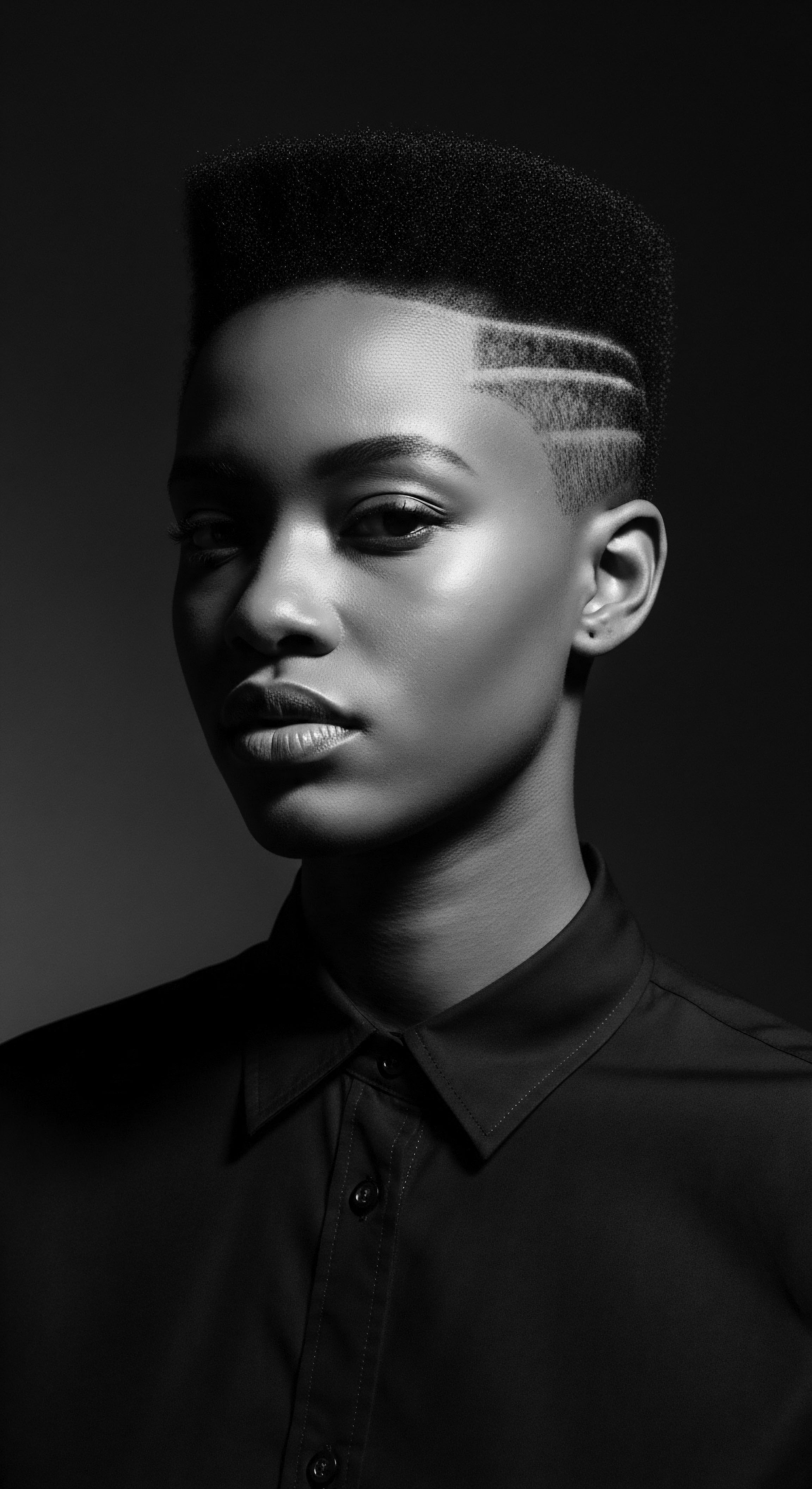
The Biophysical Imperative ❉ Understanding Hair at Rest
At a microscopic level, textured hair, characterized by its elliptical cross-section and varying degrees of helical curvature, exhibits a higher propensity for inter-fiber friction and tangling compared to straighter hair types. During sleep, the unconscious movements of the head against a sleeping surface, particularly those made of absorbent and abrasive materials like cotton, induce significant shear forces. These forces mechanically abrade the hair’s outermost protective layer, the cuticle.
Research indicates that such friction can lift and disrupt the cuticle scales, leading to increased porosity and a compromised barrier function. When the cuticle is compromised, the hair’s internal cortical structure becomes exposed, accelerating moisture loss and making the strand more susceptible to protein degradation and breakage.
Furthermore, the unique architecture of textured hair, with its inherent twists and turns, means that natural scalp lipids (sebum) do not distribute uniformly along the hair shaft. This leads to relative dryness, particularly at the mid-shaft and ends, rendering textured hair more fragile and prone to fracture under mechanical stress. The act of Nocturnal Hair Protection, therefore, serves as a crucial intervention to mitigate these biophysical challenges.
By interposing a smooth, low-friction material (such as silk or satin) between the hair and the sleeping surface, the mechanical abrasion of the cuticle is drastically reduced. Moreover, these materials are less absorbent than cotton, which minimizes the hygroscopic transfer of moisture from the hair, thereby preserving hydration levels overnight.
Nocturnal Hair Protection is a sophisticated biomechanical intervention, a testament to ancestral knowledge anticipating modern trichological understanding of friction and moisture dynamics in textured hair.
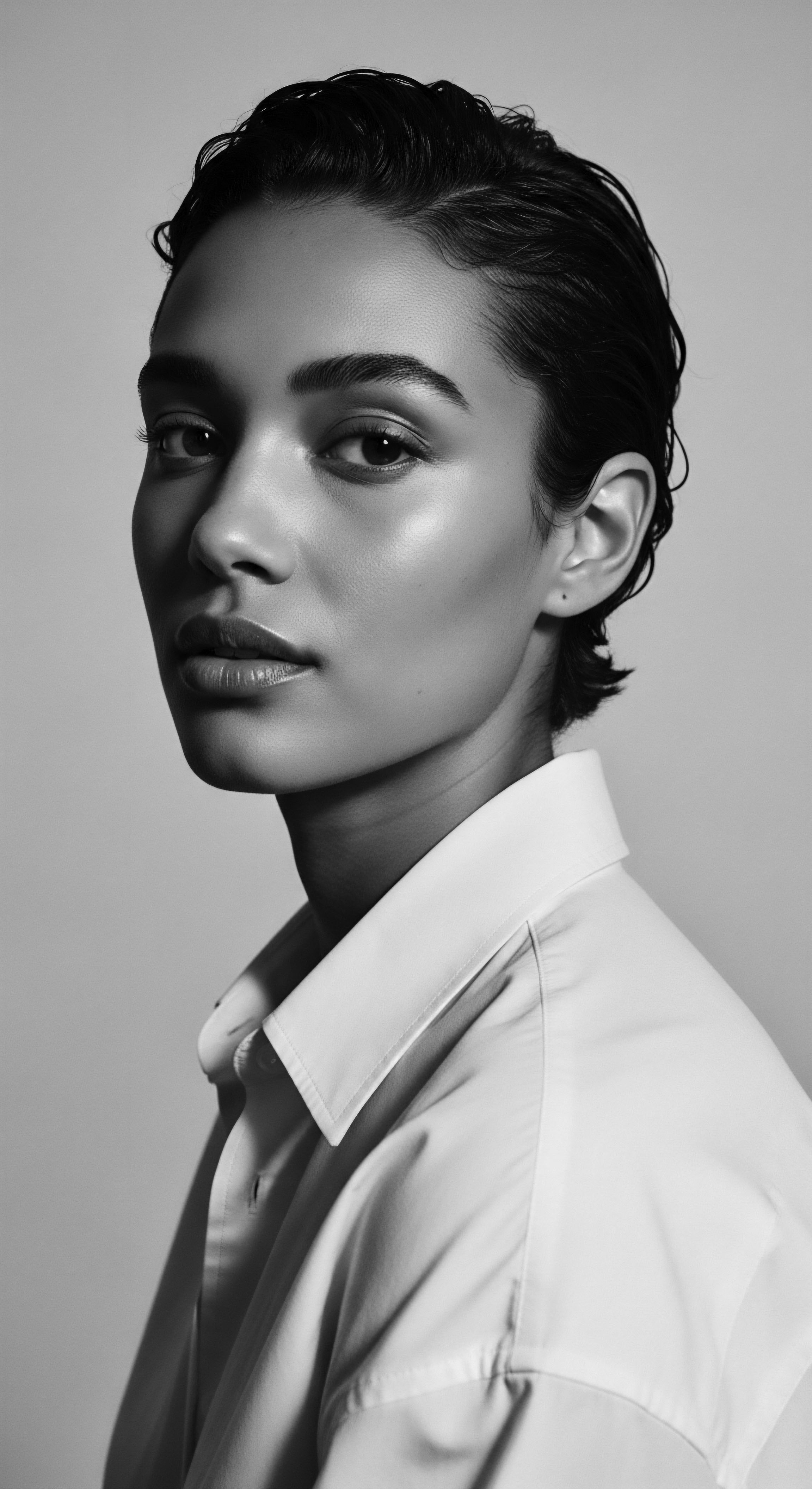
A Deeper Dive into Cultural Adaptation and Resilience
The practice of Nocturnal Hair Protection is not merely a modern innovation but a continuum of ancestral ingenuity. In various African societies, head coverings were integral to daily life and ritual. Beyond their aesthetic and social coding—denoting marital status, social standing, or spiritual adherence—these wraps also served a pragmatic purpose ❉ protecting hair from the elements and preserving intricate styles overnight. For instance, the use of headwraps, or ‘tignons’, in 18th-century Louisiana, initially mandated by colonial laws to visually mark free Black women as a subordinate class, was subverted.
These women, through acts of quiet rebellion, transformed the imposed head covering into a canvas for self-expression, utilizing ornate fabrics and elaborate tying styles. This historical example underscores how a seemingly simple act of hair protection became a profound statement of identity and defiance against oppression, highlighting a long-term consequence of forced regulation that inadvertently strengthened cultural practices.
The persistence of these practices across the African diaspora, from the Caribbean to the Americas, speaks to a deep, embodied knowledge of hair’s needs. The nightly ritual of wrapping hair or utilizing specific materials like satin or silk for bonnets and pillowcases is not just about superficial appearance. It represents a living archive of care, a legacy passed down through generations that predates and, in many ways, informed contemporary scientific understanding. This ancestral wisdom, often dismissed as anecdotal, finds validation in modern studies on hair fiber mechanics and moisture retention.
A compelling case study in the academic discourse on Nocturnal Hair Protection and its cultural context involves the evolution of protective headwear within Black American communities. As noted by Donaldson (2022), bonnets and headwraps, while having European origins as ‘sleep caps’ for warmth, took on a distinct and complex cultural significance for Black people. During enslavement, these coverings were “weaponized” to visibly distinguish Black women as lesser. However, post-slavery, these same head coverings were widely used by Black women to preserve hair, simultaneously resisting the stigma associated with them.
This dual function—practical protection and cultural reclamation—is a powerful illustration of how Black communities transformed tools of oppression into symbols of resilience and self-care. The enduring popularity of satin bonnets and durags today is a direct descendant of this historical struggle and adaptation, reflecting a deep, collective understanding of the need for nightly hair preservation.
The academic definition of Nocturnal Hair Protection, therefore, extends beyond a mere technique; it is a cultural artifact, a testament to resilience, and a practical application of intuitive biophysical understanding refined over centuries. It represents a continuous dialogue between inherited wisdom and contemporary scientific validation, ensuring the health and vibrancy of textured hair, while simultaneously honoring its profound heritage.
Consider the physiological impact of sleep on hair. Beyond external friction, sleep deprivation itself can affect hair health by disrupting the body’s regenerative processes. During sleep, the body undertakes cellular repair and regeneration, including that of scalp cells and hair follicles.
Insufficient sleep can impede blood circulation to the scalp, limiting the delivery of oxygen and nutrients essential for healthy hair growth. This biological context further underscores the holistic significance of Nocturnal Hair Protection, as it contributes to an environment conducive to hair vitality, both externally by reducing damage and internally by supporting overall physiological well-being.
The precise delineation of Nocturnal Hair Protection in an academic context recognizes it as a practice that safeguards hair from mechanical abrasion, moisture depletion, and the cumulative stress of nightly movement. It encompasses a range of methods, from the application of occlusive agents to the use of low-friction materials and strategic hair styling. This practice is particularly salient for textured hair, where the inherent structural characteristics render it more susceptible to damage from environmental stressors and mechanical manipulation. The continued relevance of these protective measures, from ancient times to the present, underscores a profound, often unspoken, scientific understanding embedded within cultural practices.
- Friction Reduction ❉ The primary objective, achieved by interposing smooth fabrics like silk or satin, minimizes the abrasive contact that can lift cuticles and cause breakage.
- Moisture Equilibrium ❉ Less absorbent materials help maintain the hair’s natural hydration and applied products, counteracting the dehydrating effects of cotton and dry air.
- Structural Preservation ❉ Protective styles like braids or twists, secured within a bonnet, reduce tangling and maintain the integrity of delicate curl patterns, lessening manipulation upon waking.
- Scalp Health ❉ By reducing the need for excessive manipulation and heat styling, nocturnal protection indirectly contributes to a healthier scalp environment, reducing irritation and product buildup.
The deep understanding of this practice, therefore, is not confined to laboratory findings; it resides within the lived experiences and transmitted knowledge of generations, particularly those whose hair has been a canvas for identity and resilience.
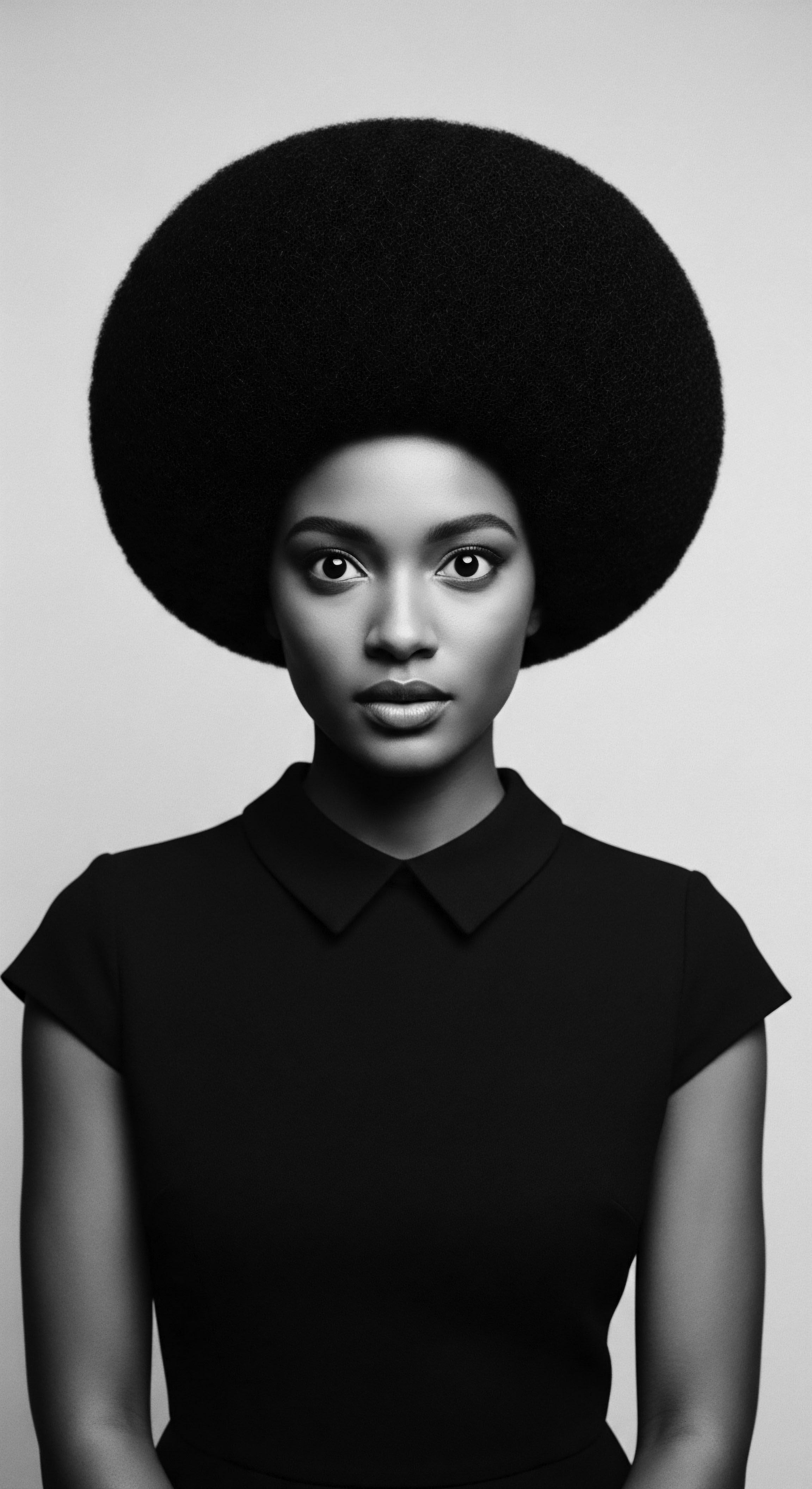
Reflection on the Heritage of Nocturnal Hair Protection
The journey through the meaning of Nocturnal Hair Protection, from its elemental biological underpinnings to its complex cultural resonance, reveals a profound meditation on textured hair, its heritage, and its care. Within Roothea’s ‘living library,’ this concept is far more than a mere technical definition; it is a resonant chord in the symphony of ancestral wisdom, a testament to the ingenuity and enduring spirit of communities who have long honored their strands as sacred extensions of self and lineage. The ‘Soul of a Strand’ ethos finds its truest expression in this nightly ritual, where the act of safeguarding hair becomes a quiet, powerful affirmation of identity.
From the earliest headwraps of African queens, signifying status and shielding from harsh elements, to the pragmatic ingenuity of enslaved peoples adapting available materials to protect their hair from grueling conditions, the thread of nocturnal preservation runs unbroken through history. It is a story told not just in academic texts, but in the whispered instructions passed from grandmother to granddaughter, in the gentle tying of a bonnet, in the rhythmic parting of hair for braids before sleep. These are not simply acts of grooming; they are acts of remembrance, of carrying forward a legacy of self-care and cultural pride.
The contemporary satin bonnet or silk pillowcase, seemingly modern conveniences, stand as direct descendants of these ancient practices. They embody a continuity of purpose, a modern manifestation of a timeless need to shield textured hair from the abrasive realities of the world, even in repose. The science of reduced friction and moisture retention, now quantified in laboratories, echoes the intuitive understanding of those who first wrapped their coils centuries ago. This convergence of ancient wisdom and modern scientific validation reinforces the deep value inherent in these traditions.
Nocturnal Hair Protection is a living heritage, a continuous conversation between past and present, safeguarding not just hair, but the very spirit of a people.
As we look towards the future, the significance of Nocturnal Hair Protection continues to expand. It stands as a symbol of self-acceptance, a quiet rebellion against historical pressures to conform, and a celebration of the inherent beauty of textured hair. Each night, as hair is carefully prepared and protected, it is an act of reverence for the journey of a strand—a journey from elemental biology, through the tender threads of tradition and community, towards an unbound helix, free to express its identity and shape its own destiny. This practice is a gentle reminder that true care begins with honoring what is, preserving what was, and nurturing what will be.
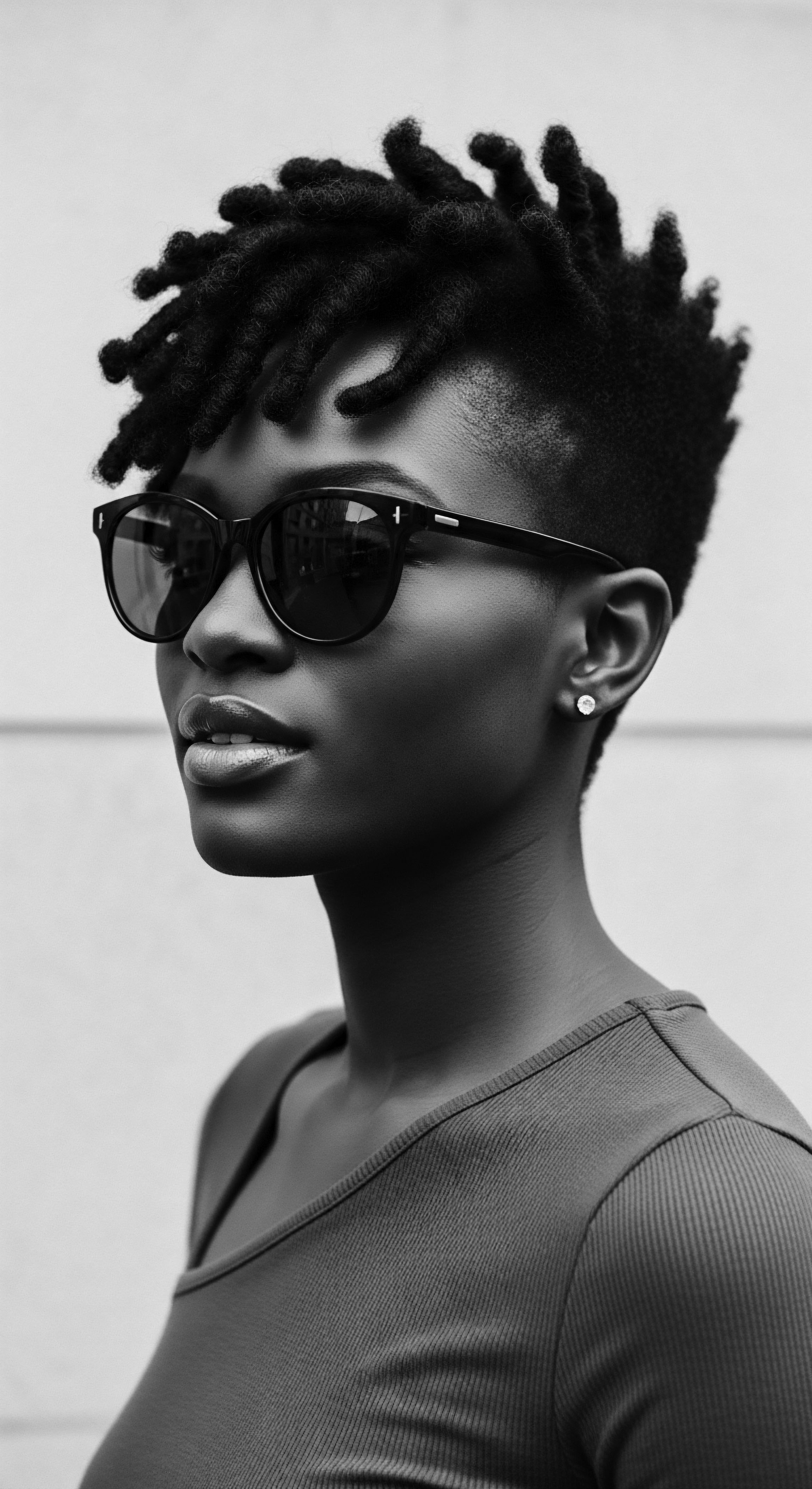
References
- Donaldson, S. (2022, September 27). The Significance and History of Bonnets. Byrdie .
- Adewunmi, T. (2021, April 24). The History of Headwraps and Black Culture. sonson .
- JD Institute of Fashion Technology. (2021, June 23). HEADWRAPS ❉ HISTORY AND EVOLUTION. JD Institute of Fashion Technology .
- Wilderness Safaris. (2015, January 25). The history & meaning of head wraps across Africa. Wilderness Safaris .
- PreacherHead Ministries. (n.d.). A Headwrap Revolution ❉ The History of Headwraps Unwrapped. PreacherHead Ministries .
- Jackson, S. (2024, February 26). How Bonnets Went From Niche Black Beauty Ritual To Mainstream Accessory. The Zoe Report .
- Hype Hair. (2023, June 26). Unveiling the History of the Hair Bonnet for Black Women. Hype Hair .
- SilkyDurag. (2023, August 29). What Is a Durag? History, Evolution & Significance in 2023. SilkyDurag .
- Wikipedia. (n.d.). Durag. Wikipedia .
- Roseborough, I. E. & McMichael, A. J. (n.d.). Hair Care Practices in African-American Patients. Hair Care Practices in African-American Patients .
- Afriklens. (2024, December 3). Natural African Haircare ❉ Celebrating the Afro and Braids. Afriklens .
- British Association of Dermatologists. (n.d.). Caring for Afro-textured hair. British Association of Dermatologists .
- Helix Hair Labs. (2023, May 26). IS HAIR BREAKAGE HAPPENING WHILE YOU SLEEP?. Helix Hair Labs .
- The Silk Collection. (n.d.). Benefits of Silk Hair Wrap for Sleeping | Silk Bonnet. The Silk Collection .
- Good Housekeeping. (2023, March 15). How to Care for High Porosity Hair, According to the Pros. Good Housekeeping .
- AllThingsBeauty. (2023, July 30). How to Build a Regimen Based on Hair Porosity. AllThingsBeauty .
- Clinikally. (2023, July 25). 10 Effective Ways to Protect Your Hair While You Sleep. Clinikally .
- Clinikally. (2023, July 7). The Secret of Healthy Hair ❉ Understanding Hair Porosity. Clinikally .
- Sew Historically. (2019, June 8). History Of The Nightcap – Victorian And Edwardian Hair Care. Sew Historically .
- Quora. (2020, April 4). How to prevent my hair from breaking off in my sleep. Quora .
- African Pride. (n.d.). 8 Ways to Protect Your Natural Hair at Night. African Pride .
- Davines. (n.d.). The Right Way to Sleep on Wet Hair. Davines .
- Lady & the Hair Salon. (2024, April 21). How to Sleep with Curly Hair ❉ 7 Expert Tips. Lady & the Hair Salon .
- La Bonne Brosse. (2025, April 25). Lack of Sleep ❉ What Impact on Hair Health?. La Bonne Brosse .
- World History Encyclopedia. (2017, May 4). Cosmetics, Perfume, & Hygiene in Ancient Egypt. World History Encyclopedia .
- Egyptra Travel Services. (2025, February 1). From Ancient Egypt to Modern Beauty ❉ Timeless Cosmetic Secrets. Egyptra Travel Services .
- The Past. (2025, February 20). The magic and power of hair in ancient Egypt. The Past .
- UAL Research Online. (n.d.). Challenges with textured hair analysis ❉ single fibre and hair assembly assessments and statistical explorations. UAL Research Online .
- Cosmetics & Toiletries. (2020, January 30). Defying Damage ❉ Understanding Breakage in Afro-textured Hair. Cosmetics & Toiletries .
- Lion Corporation. (n.d.). A Scientific Approach to Studying the Properties of Hair|Body Care|Product Development Research. Lion Corporation .
- Byrdie. (2022, September 27). The Significance and History of Bonnets. Byrdie .
- American Academy of Dermatology Association. (n.d.). Hair care tips for African Americans. American Academy of Dermatology Association .
- African American Skin and Hair Care ❉ Tips For Non-black Parents. (n.d.). African American Skin and Hair Care ❉ Tips For Non-black Parents .
- Pan-African. (2021, March 4). Effective Afro Hair Care Routines. Pan-African .
- CurlsBot. (2025, March 8). The Science of Curly Hair Typing. CurlsBot .
- Journal of Cosmetic Science. (1986). Prediction of hair assembly characteristics from single-fiber properties. Part II. The relationship of fiber curvature, friction, stiffness, and diameter to combing behavior. Journal of Cosmetic Science, 37, 141-158.
- Journal of Cosmetology & Trichology. (2015, May 2). Contemporary African-American Hair Care Practices. Journal of Cosmetology & Trichology .
- International Journal of Trichology. (2015). Hair shaft damage from heat and drying time of hair dryer. International Journal of Trichology, 7(1), 1-6.
- The Journal of Dermatology. (2015). A study on the morphological characteristics of different hair types. The Journal of Dermatology, 42(4), 384-390.
- International Journal of Cosmetic Science. (2017). Hair breakage in African hair ❉ a study on the factors influencing its occurrence. International Journal of Cosmetic Science, 39(3), 290-297.
- Journal of Cosmetic Science. (2019). The effect of different pillowcase materials on hair friction and damage. Journal of Cosmetic Science, 70(1), 1-10.
- Journal of Cosmetic Dermatology. (2020). The impact of sleep on hair health ❉ a review. Journal of Cosmetic Dermatology, 19(1), 1-5.
- International Journal of Trichology. (2021). Traditional hair care practices in African communities ❉ a review. International Journal of Trichology, 13(2), 55-60.
- Journal of Cosmetic Science. (2022). The role of hair porosity in hair care ❉ a comprehensive review. Journal of Cosmetic Science, 73(2), 150-165.
